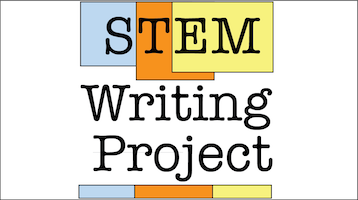STEM Writing Project
Training
 Student & Instructor Training
Student & Instructor Training
The Challenge
Undergraduates need training to develop scientific writing skills, but they are not alone. Most STEM faculty have considerable experience producing scientific writing, but few have been trained to teach scientific writing.
The WAC/WID community has spent >40 years identifying and promoting evidence-based training models. Yet most college STEM teachers have not been introduced to these proven writing training strategies or learned how to give effective, context-specific feedback.
Awareness alone is not sufficient to ensure adoption. Faculty may have different priorities or hindering attitudes by the time they teach their first classes as assistant professors. These attitudes are reflected in comments like:
- “I don’t have time to add something new to my courses.”
- “I don’t have spare class time to spend teaching writing,”
- “Students should learn how to write elsewhere.”
Even when faculty are motivated to change, how they are exposed to innovations affects adoption. Faculty are more likely to adopt new methods that they can observe in action locally or that come from trusted colleagues or respected opinion leaders, and less likely to adopt after attending formal professional development activities that promote evidence-based practices.
In contrast, graduate students who participate in formal professional development about learner-centered instruction readily adopt learner-centered methods into their personal teaching practice. A more effective strategy for changing faculty instructional practices may be to target and train future faculty who then act as change agents.
Our Approach
Training Undergraduates
Undergraduates complete five types of training activities. These are described in detail with links to relevant resources on the Undergrad Training page.
- Diagnostic activities. These provide routine benchmark data that help us identify gaps in student understanding of our expectations. To encourage students to do their best, most diagnostics are embedded in routine training assignments. Descriptions of the diagnostic elements of training activities are aggregated in a separate page of this web site.
- Reading, annotating, and discussing published scientific writing. Undergraduates need to see examples of good scientific writing before they can replicate it themselves. Annotation and discussion activities become increasingly challenging as students gain experience.
- Lower stakes practice assignments. For example, we use the summary at the end of students' weekly lab notebooks as opportunities to provide feedback on data interpretation and logic.
- Opportunities for feedback and revision on higher stakes writing assignments.Students submit initial drafts of lab reports, get instructor feedback and provisional scores, then have the opportunity to revise and resubmit before receiving a final score.
- Peer review of submitted reports. This puts students in the role of their instructors, and lets them see different approaches to writing similar studies.
We developed several computational methods for describing changes in undergraduate writing across entire cohorts. They are described further on the Program Assessment page.
- Text level proxy metrics that summarize changes in word use, sentence.
- Move analysis (in development) compares the sequence of rhetorical elements (moves) in student reports to moves patterns in a previously scored reports archive.
Training GTA Instructors
Our training strategy needs to address three specific concerns.
- Over half of our incoming GTAs have not graded student work before. Many have limited scientific reading and writing experience themselves so are less confident in their ability to judge the work of others. To compensate, less experienced GTAs often focus first on obvious mechanical and formatting errors, citation punctuation, and other items that can be corrected by copy-editing.
- Incoming GTAs who have more teaching and writing experience often bring biases and misonceptions based on their past experiences, or incorporate writing conventions that are specific to their research field.
- All GTAs' grading performance and priorities can drift over time.
Three training activities help GTAs internalize and start using our bins-oriented strategy and grading goals. They are described further on the GTA Training page.
- A two-part general orientation to our approach. Part one occurs during the first day of orientation for new GTAs. Part 2 takes place during a lab prep meeting ~ 2 weeks before GTAs teach writing for the first time.
- Marking up previously graded reports. Before grading their first time, GTAs are given a set of training reports and asked to grade them using our bins-based scoring. After grading, GTAs discuss their scores and comments with experienced graders.
- Round-robin scoring. Each GTA selects 4 reports from their first set of the semester, scores them, then passes the 4 reports to another TA who also scores them. Scores and discrepancies are discussed in the next lab prep meeting. Experienced GTAs help train the incoming novice GTAs each fall semester. As experienced GTAs assist new peers, most will self-correct any points where their grading habits have drifted from our expectations.
We conduct two routine post-grading checks of GTA scoring. They are described further on the Program Assessment page.
- Correlation analysis comparing students' lecture and lab grades at the end of each semester.
- Spot checks of the types of comments GTAs make on reports at least once each year.
Looking Ahead
We are always looking for new instructor and student training methods. If you have a tool or strategy that works for you, please share it in the Comments for the sub-project. Also, check the list of To Do items for the Training project. Let us know if you want to take on one or more.
Where to Learn More
-
Council of Writing Program Administrators, National Council of Teachers of English, & National Writing Project, 2011. Framework for success in postsecondary writing.
-
Hall, E., Hughes, B., 2011. Preparing Faculty, Professionalizing Fellows: Keys to Success with Undergraduate Writing Fellows in WAC. The WAC Journal 22, 21–40. https://doi.org/10.37514/WAC-J.2011.22.1.03.
-
Jackson, N.C., Olinger, A.R., 2021. Chapter 13. Preparing Graduate Students and Contingent Faculty for Online Writing Instruction: A Responsive and Strategic Approach to Designing Professional Development Opportunities, in: Borgman, J., McArdle, C. (Eds.), PARS in Practice: More Resources and Strategies for Online Writing Instructors. The WAC Clearinghouse; University Press of Colorado, pp. 225–242. https://doi.org/10.37514/PRA-B.2021.1145.2.13.
-
Reynolds, J., Smith, R., Moskovitz, C., Sayle, A., 2009. BioTAP: A Systematic Approach to Teaching Scientific Writing and Evaluating Undergraduate Theses. BioScience 59, 896–903.
Comments
There are no comments on this entry.
